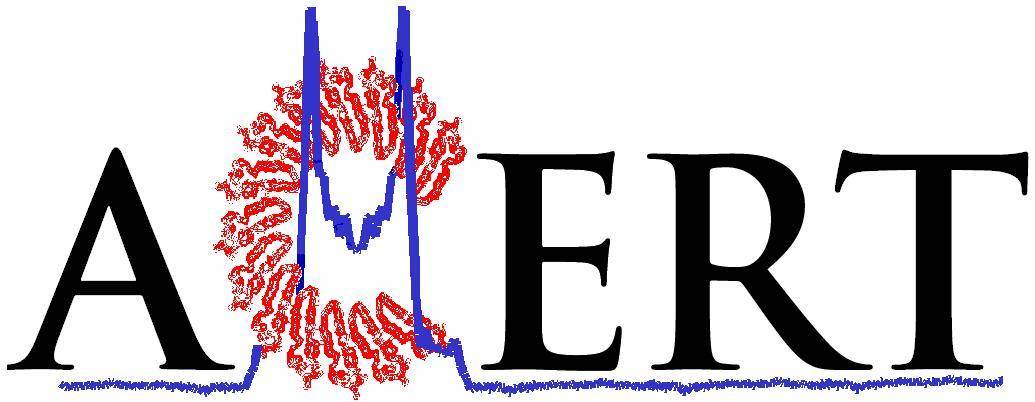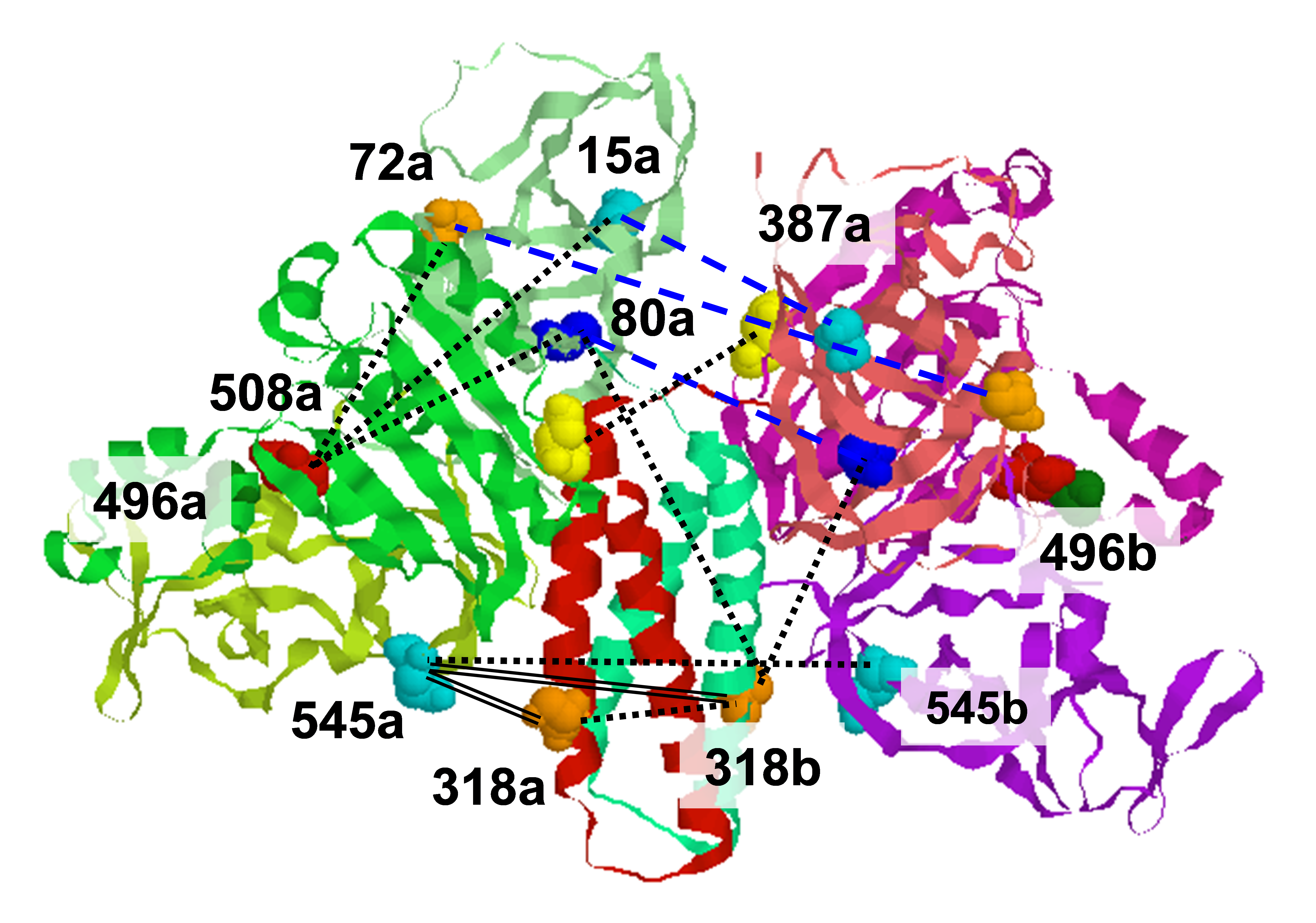National Institute of General Medical Sciences |
 |
 |
National Biomedical Resource for |
|
ACERT Downloadable Software Archive last update: August 22, 2023 |
|
This software includes: Original versions of well-known programs described in the papers "Calculating Slow Motional Magnetic Resonance Spectra: A User's Guide" by D.J. Schneider and J.H. Freed. Spin Labeling: Theory and Applications, Vol. III, Biological Magnetic Resonance 8, 1-76 (1989) (Plenum, NY) and "Nonlinear Least-Squares Analysis of Slow-Motional EPR Spectra in One and Two Dimensions Using a Modified Levenberg-Marquardt Algorithm" by David E. Budil, Sanghyuk Lee, Sunil Saxena and Jack H. Freed. J. Magn. Res. A 120, 155-189 (1996) and their most recent updates: EPRLL, PC, NLSL, PC.NEW, NL2DR, NL2DC
The programs are contained in the following ZIP files: EPRLL - the basic simulation programs for CW spectrum calculation including the program EPRBL used to determine the truncated basis sets. A detailed description of the method and Version 1.0 of the program is given in the “User’s guide” by Schneider and Freed (1989). See file UPDATE.DOC for cumulative changes through Version 1.6b that have been made in EPRLL and related programs since the publication of Version 1.0. PC - the original PC version of the CW spectrum simulation programs. (11/3/95). NLSL.MOMD - the least squares version of the above CW MOMD program described by Budil et al. (1996). See the subdirectory EXAMPLES for fitting examples to test. PC.NEW - a version of the NLSL programs suitable for running on a PC with WINDOWS 98/2000/NT/XP. Besides executables and calculation examples the folder contains files, which are necessary for Fortran Powerstation 4.0 to compile and link the source files from NLSL.MOMD folder. See README.TXT in this directory. The source code files for the 2D-FT-ESR programs below are designed for running under LINUX. They are stored in uncompressed or zipped format and may be obtained by ASCII ftp transfer. Tar files are provided for compressed data transfer and contain all files in the specific directories and subdirectories except the executables to save space. READ.ME files are provided in each of the above directories giving further information on their contents and usage. NL2DC - Contains the two-dimensional Fourier Transform (2D-FT) version of the least squares program using the conjugate gradients matrix solution method. For 2D basis set pruning see the subdirectory BASIS in NL2DR. NL2DR - Contains the 2D-FT version of the least squares program using the Rutishauser matrix solution method. For 2D basis set pruning see the subdirectory BASIS. NLSPMC contains the 2D-FT version of the least-squares program using the conjugate-gradient method. This version is capable of simultaneously fitting multiple spectral components and multiple spectra of different mixing times. This is an upgraded version of the NL2DC. See "Lipid-Gramicidin Interactions: Dynamic Structure of the Boundary Lipid by 2D-ELDOR" by A. J. Costa-Filho, R. H. Crepeau, P. P. Borbat, M. Ge, and J. H. Freed. NLSPMC_ri contains the full Sc- 2D-FT version of the least-squares program using the conjugate-gradient method. This version is modified from the NLSPMC. The fitting is performed in the full Sc- domain as described in "Two-Dimensional ELDOR in the Study of Model and Biological Membranes", by Y.-W. Chiang, A. J. Costa-Filho, and J. H. Freed. NLSPMC_qmr contains the 2D-FT version of the least-squares program using the quasi-minimal residuals (QMR) method. This program was developed and optimized for fitting 2D-ELDOR spectra at high-frequencies in the very slow-motional regime. See "A New Lanczos-Based Algorithm for Calculation High-Frequency Two-Dimensional ELDOR Spectra in the Slow-Motional Regime" by Y.-W. Chiang and J. H. Freed. NLSL.SRLS contains the basic programs for CW spectral fitting using the SRLS model as described by Liang and J.H. Freed (1999). NLSL.SRLS is the fitting program, and ESRBS.SRLS is used to prune the basis set. LBSR.SRLS is for inputting all the parameters used in an ESRBS.SRLS calculation. NLSL.SRLS.EXCH contains updates of NLSL.SRLS for dynamic exchange of the nitroxide between two conformers. NLSL.SRLS.EXCH can be used to perform spectral simulations. Basis set pruning and parameter inputing programs are the same as those listed in NLSL.SRLS. PD_Tikhonov package, includes all necessary functions required to extract the pair distributions from pulsed ESR experiments using the Tikhonov regularization method. MATLAB version 6.5 or higher is required to perform the task. PD_Tikhonov requires the use of the Regularization Toolbox package obtainable from the website: http://www2.imm.dtu.dk/~pch/Regutools/index.html. The toolbox is well documented with a detailed manual and illustrated with numerous examples. We strongly suggest users should first get acquainted with the Regularization Toolbox. After un-zipping the package, please read README.pdf file. DPD_pkg package, includes all necessary functions required to perform Tikhonov regularization (TIKR) method and maximum entropy method (MEM) to extract the pair distributions from pulsed ESR experiments. DPD_pkg can be considered an upgraded version of PD_Tikhonov package since both TIKR and MEM are included in the package. MATLAB version 6.5 or higher is required to perform the task. DPD_pkg requires the use of the Regularization Toolbox package obtainable from the website: Also available are C2S, LITTLEJ, and NLSL. The Readme and Corrections information is available in the Supplements package. Every effort has been made to ensure that these programs are correct and thoroughly tested. However, the programs are distributed "AS IS", and all warranties, whether expressed or implied, as to correctness or fitness for any specific purpose are specifically disclaimed. In no event shall the authors be liable for any direct, consequential or incidental damages arising from the use of these programs. Free use and distribution of these programs is permitted with suitable reference to the original publication (see above) in any published work resulting from the use of these programs or programs derived from them. The programs may be copied and distributed, so long as, 1) due credit is given by retaining the comment lines at the beginning of each source file in all copies; and 2) all copies must be distributed free of charge. Questions and comments may be directed to ACERT at acert@cornell.edu, which will forward the correspondence to the most appropriate person.
© 2022 |
|
About ACERT Contact Us |
Research |
Outreach |
ACERT is supported by grant 1R24GM146107 from the National Institute of General Medical Sciences (NIGMS), part of the National Institutes of Health. |
|||||
| ||||||||